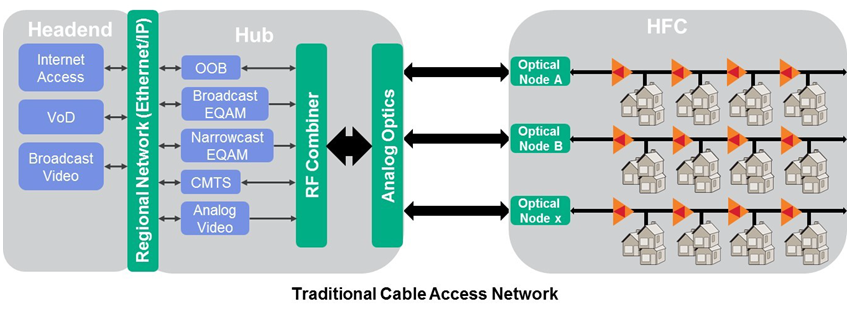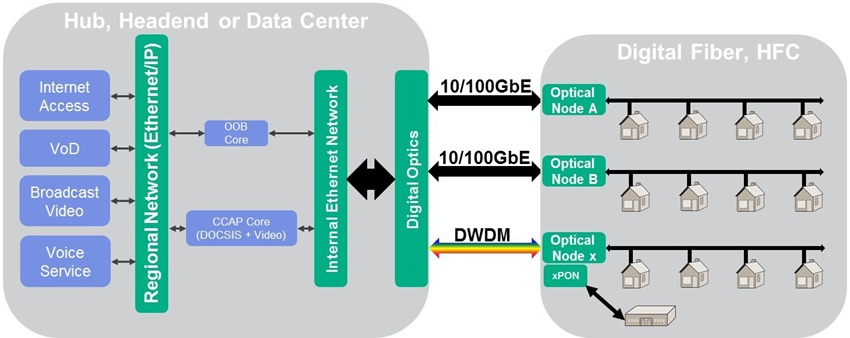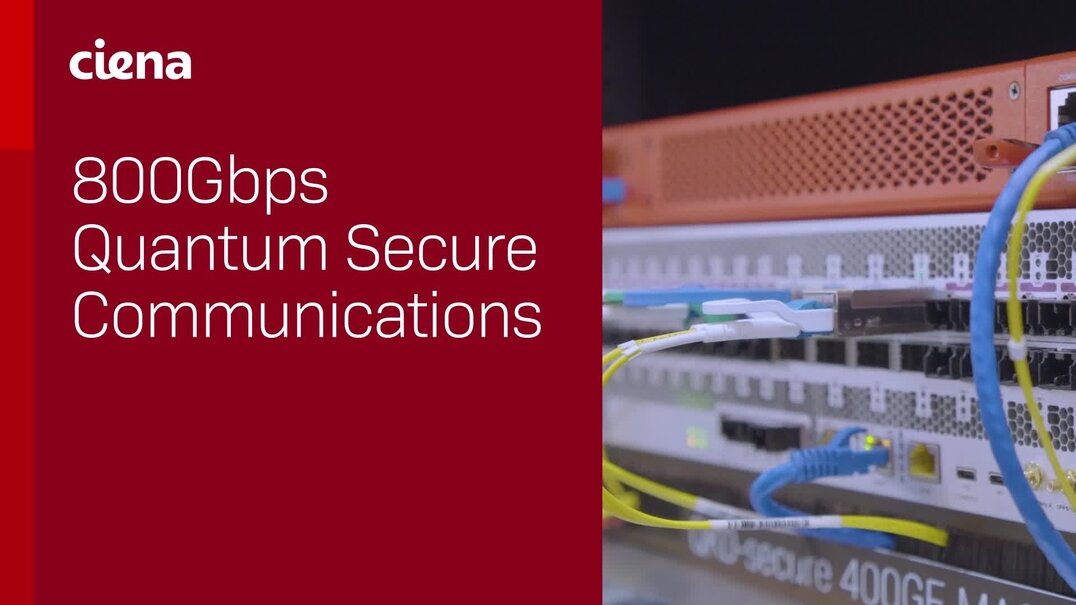Re-Sodding Cable MSO Brownfields
It’s no secret, fiber is one of the most cost-effective solutions towards addressing growing bandwidth needs and increasingly critical operational efficiency. And so, for many years, cable operators have used fiber to build out their hybrid fiber-coax (HFC) networks, resulting in a brownfield network that uses fiber optic cable to the neighborhood and coaxial cable to the home. It should come as no surprise that for new builds or greenfield areas where coaxial cable doesn’t exist, some cable operators have determined to deploy fiber to the home.
Fiber has been the backbone of the global telecommunications network for more than a quarter of a century.
Cable Multiple Systems Operators (MSOs) are very familiar with re-sodding their brownfield cable infrastructure, with fiber, to make it “greener”. For example, when cable operators saw huge demands in linear video, Video-on-Demand (VoD) and high-speed data services, and faced with an aging analog infrastructure, they moved to a Converged Cable Access Platform (CCAP) to increase capacity and throughput. CCAP combines headend functions into a single architecture by combining edge quadrature amplitude modulation (EQAM) and Cable Modem Termination System (CMTS).

Sure enough, this approach addressed network capacity, but it’s expensive, requires a lot of space, power, cooling, and Operational and Business Support Systems (OSS, BSS). Even transmitting program guide information and other non-video program data to and from CMTS uses Out-Of-Band (OOB) spectrum. While analog optics allow high order modulation (4K and 16K QAM) schemes for capacity, they have limitations on distance, are demanding to setup, and expensive to maintain.
With an increase in demand for high-speed data, IP video, cloud computing, and business services, cable MSO brownfields need to re-sod or upgrade their cable network. Today, the most constrained part of the cable network, and the costliest to upgrade, is the fiber infrastructure between the headend and the optical node. With aging analog infrastructure, and to meet service demand, cable operators look to an all-digital operation to increase capacity and throughput.
When increasing capacity and throughput, there are three basic influential factors:
- Load - the amount of data requested and sent by users
- Pipe - throughput, and capacity available in the network
- Serving group size - the number of users sharing the pipe
Pushing fiber deeper to the customer reduces the service group size, increases throughput and capacity, and handles load more efficiently by using next generation digital encoding and Data Over Cable Service Interface Specification (DOCSIS) technologies.
One of the big advantages of using digital optics is that it does not require the dismantling of the CCAP network and provides a path to future Fiber-To-The-Node (FTTN) technologies. Cable operators can leverage existing coaxial cable and use Ethernet to greatly reduce headend equipment, transport, and deployment cost. Finally, by extending IP and Ethernet to the fiber network, services delivered for both residential and business customer traffic can share the same node, by multiplexing at the wavelength, Ethernet, MPLS, or IP layers.

Migrating the headend to optical node from analog to digital optics enables two major transitions in parallel. First, a dramatic simplification of the headend or hub, by removing RF-centric functions, and secondly extending the IP/Ethernet network from the core to the node. These transitions don’t necessarily have to happen consecutively. This will depend on the cable operator’s changing residential and business service needs, and competition.
Make no mistake, re-sodding cable MSO brownfields with digital optics is the enabler.





